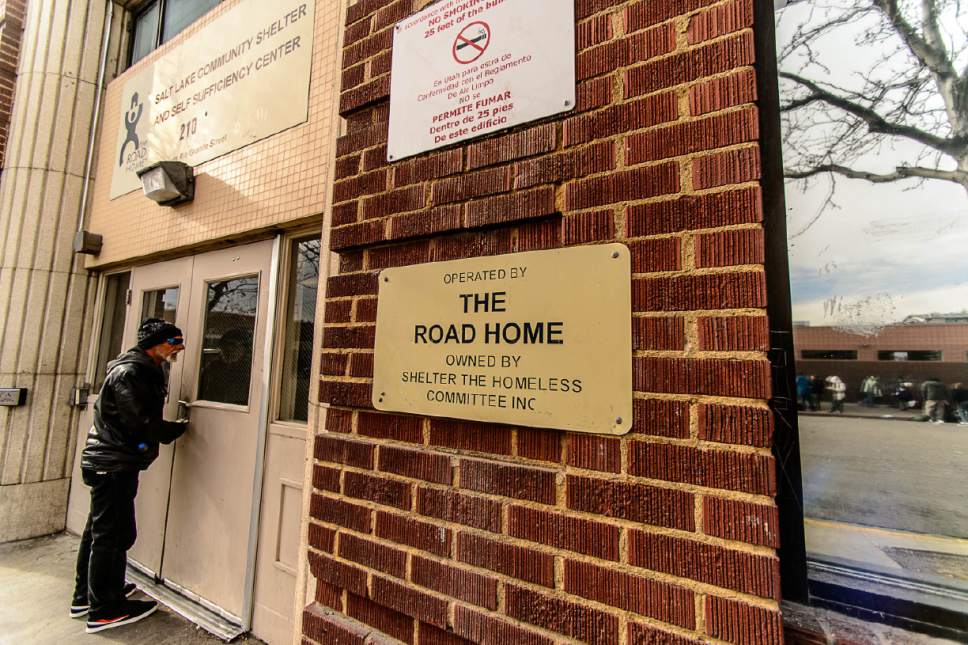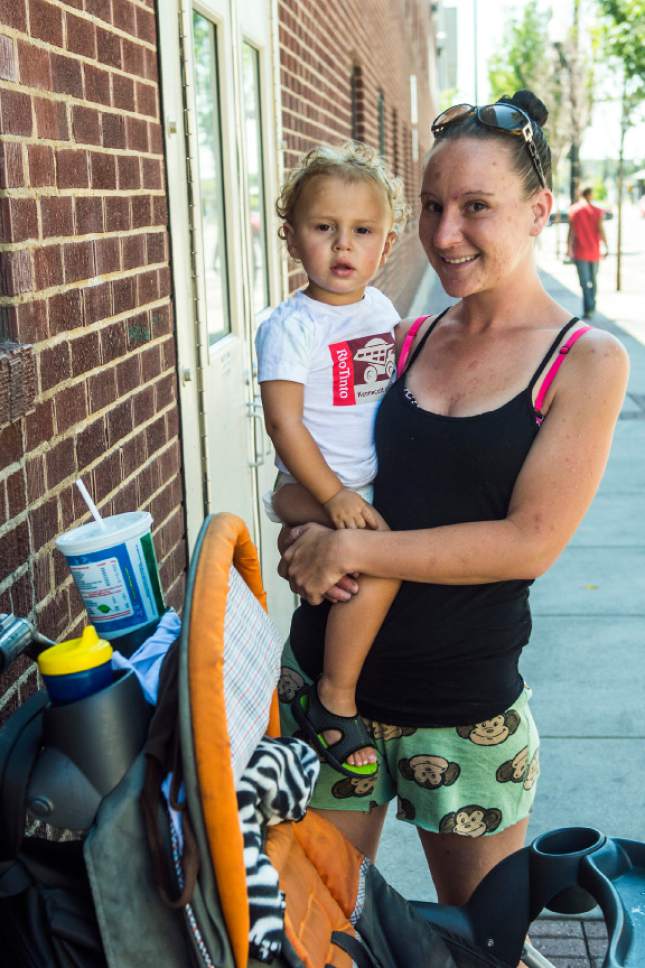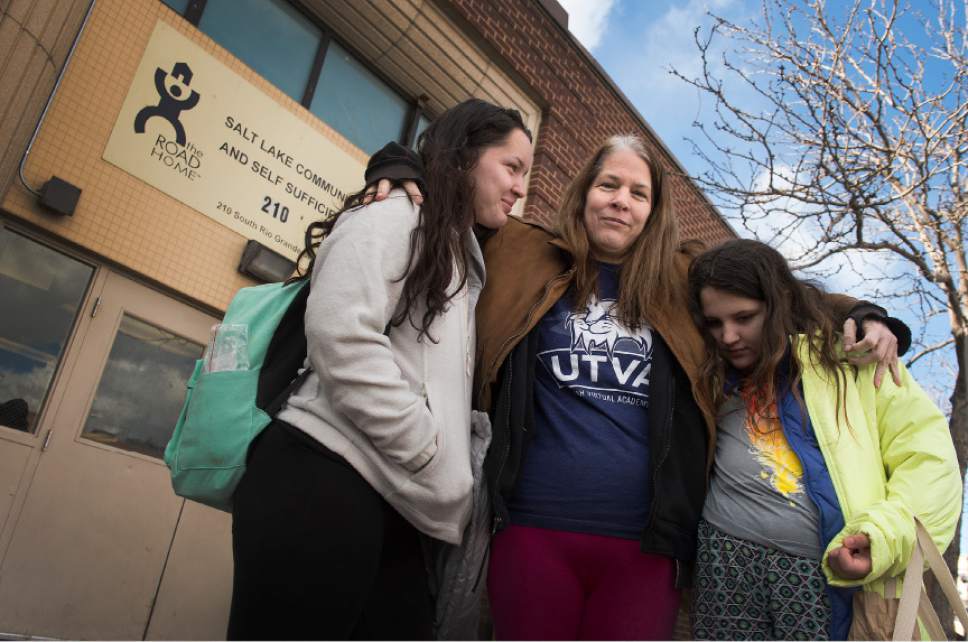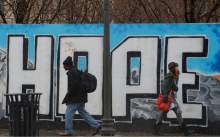This is an archived article that was published on sltrib.com in 2017, and information in the article may be outdated. It is provided only for personal research purposes and may not be reprinted.
Of all the arguments dogging a plan to reduce homelessness in and around the state capital, the most persistent may be that the numbers just don't add up.
Leaders would replace an at-capacity 1,100-bed shelter with three smaller shelters that would house between 600 and 700 beds, total.
What happens to the other 400 to 500 people?
The Department of Workforce Services has an answer that it presented Monday to the nonprofit owners of Salt Lake City's downtown emergency shelter at 210 S. Rio Grande St.
Its data comes from budget analyses that drove stakeholders' decision to shift gears midway through the legislative session — going from four proposed sites in Salt Lake City to two and placing another shelter in Salt Lake County.
It would have cost $4.5 million more to build four shelters rather than three, and — more importantly — $2.6 million in additional annual funding to operate a fourth new shelter.
Anticipated revenue streams weren't going to cut it, the analyses show.
They also show how leaders expect to meet the demand for emergency beds after they committed to a June 30, 2019, closure of the much larger shelter at 210 S. Rio Grande St. that is pushed to its limits on cold winter nights — a question that has greatly concerned homeless advocates.
The state figures a current capacity of 1,371 beds between the downtown emergency shelter and another 300-bed family shelter in Midvale. Both are operated by The Road Home and owned by a nonprofit board, Shelter the Homeless, that is also expected to assume ownership and oversight of the three new shelters.
DWS predicts that while a three-shelter model would provide fewer traditional shelter beds, it would offer the same amount of bed "equivalents."
Here's how:
• At a cost of $2.2 million per year, the budget provides for up to 170 beds through motel vouchers for families and up to 31 seasonal beds (160 days) through motel vouchers for individuals.
• At a cost of $850,000 per year, the budget includes up to 100 beds through a per diem contingency, plus up to 66 seasonal overflow beds.
• At a cost of $2.6 million per year, the need for 92 beds would be offset either through newly available affordable housing or housing vouchers. (Because the rate of turnover is much higher in shelters than housing, nearly seven units of housing are required to offset the need for one shelter bed.)
• The need for 75 beds would be offset by an anticipated 10 percent reduction in the time people spend in a shelter, credited to one-stop, resource-oriented shelters and an improved county service model. Eighteen more beds would be offset by so-called diversion, in which people on the verge of homelessness would be pointed toward alternate housing.
Grand total, that's 550 beds — the difference between today's capacity at 210 S. Rio Grande and the capacity of 550 beds contemplated by DWS.
It's worth noting that Salt Lake City's shelters are expected to total 400 beds, while officials have said the county's shelter would house anywhere from 200 to upward of 300.
Should the shelters provide more beds than anticipated in the analyses, the plan will become more fiscally sound, said state Housing and Community Development Director Jonathan Hardy.
That's because it costs less to build and operate a slightly larger shelter than it does to provide motel vouchers.
Hardy said that in addition to $27 million committed by the state Legislature, private donations have totaled about $15 million. The remaining fundraising need is about $13 million.
The total budget anticipates $72 million in one-time funds and $16 million in ongoing funding, including housing and $500,000 for a mobile clinic
Costs to build each shelter ranged from estimates of $9 million, when they were planned to include 150 beds, to $15 million last summer, when the county anticipated two, 250-bed shelters with an uncapped capacity.
Hardy told the Shelter the Homeless board Monday that estimates were conservative and that one-time costs could be reduced if necessary.
Salt Lake City spent $3 million to acquire a site at 275 W. High Ave. and was still negotiating, as of late last week, a deal to acquire a Deseret Industries thrift store at 131 E. 700 South.
Purchase agreements obtained from Salt Lake County by open-records requests show that it would pay between $1 million and $3.5 million for a potential shelter site in West Valley City or South Salt Lake.
Twitter: @matthew_piper











